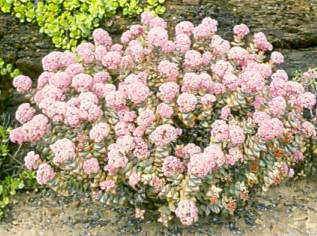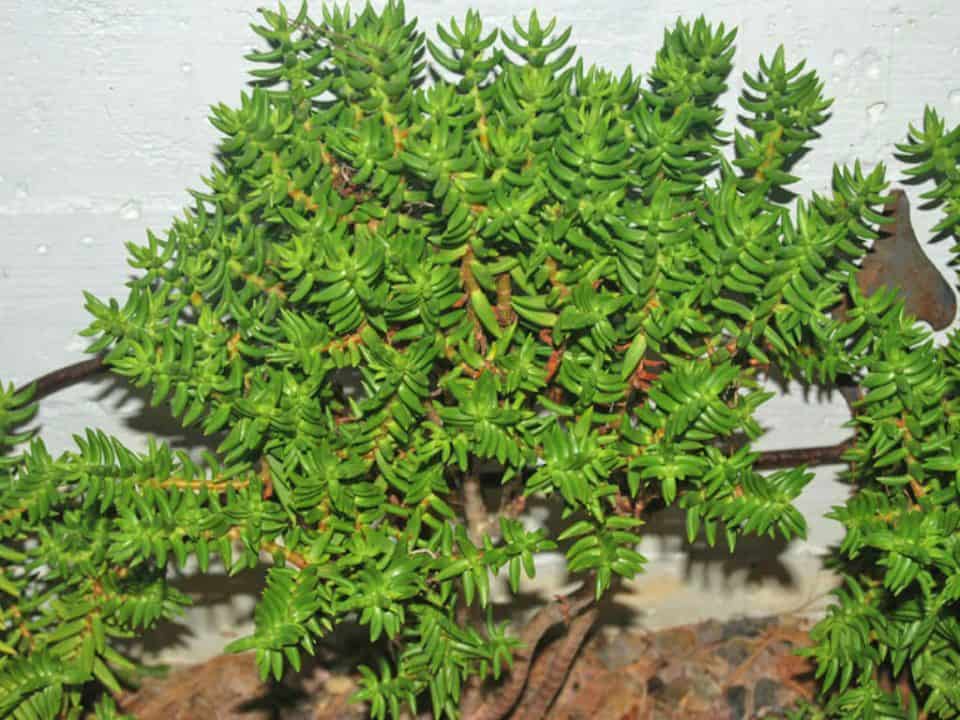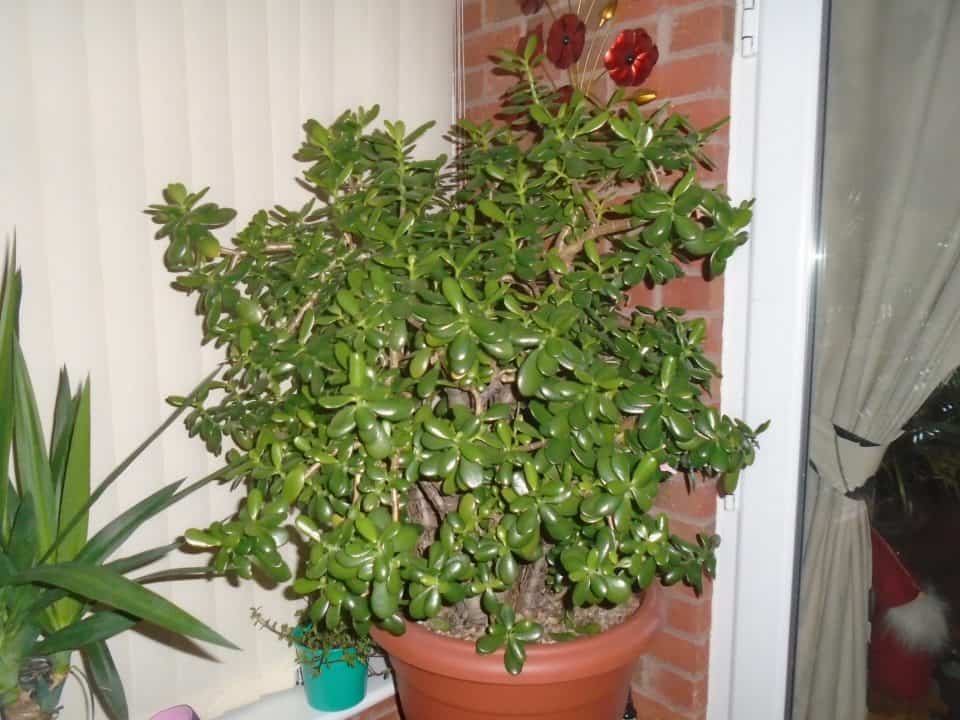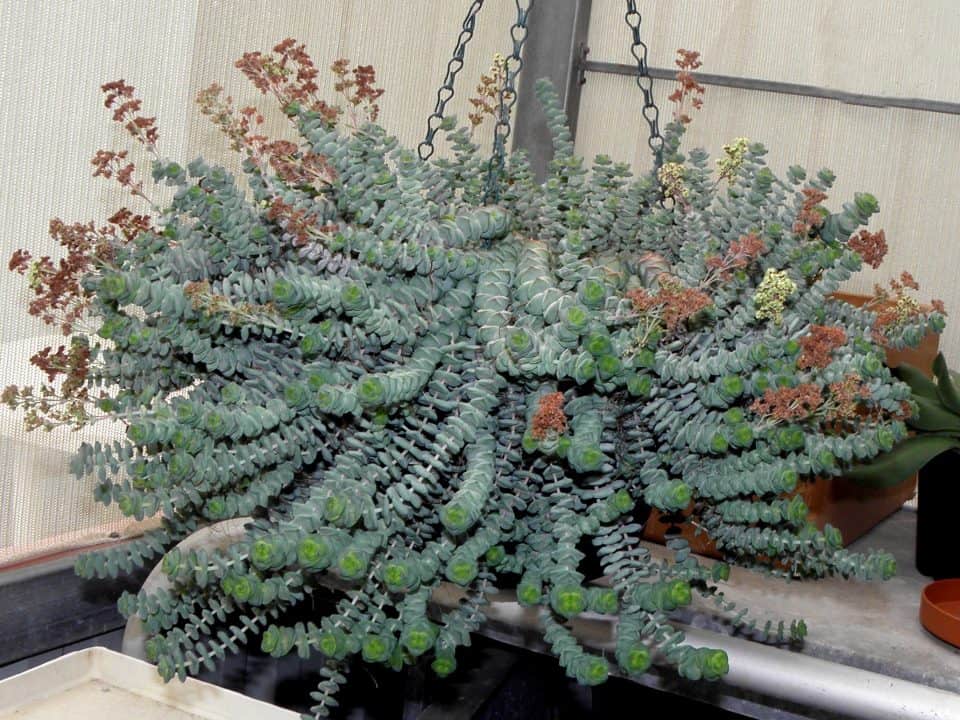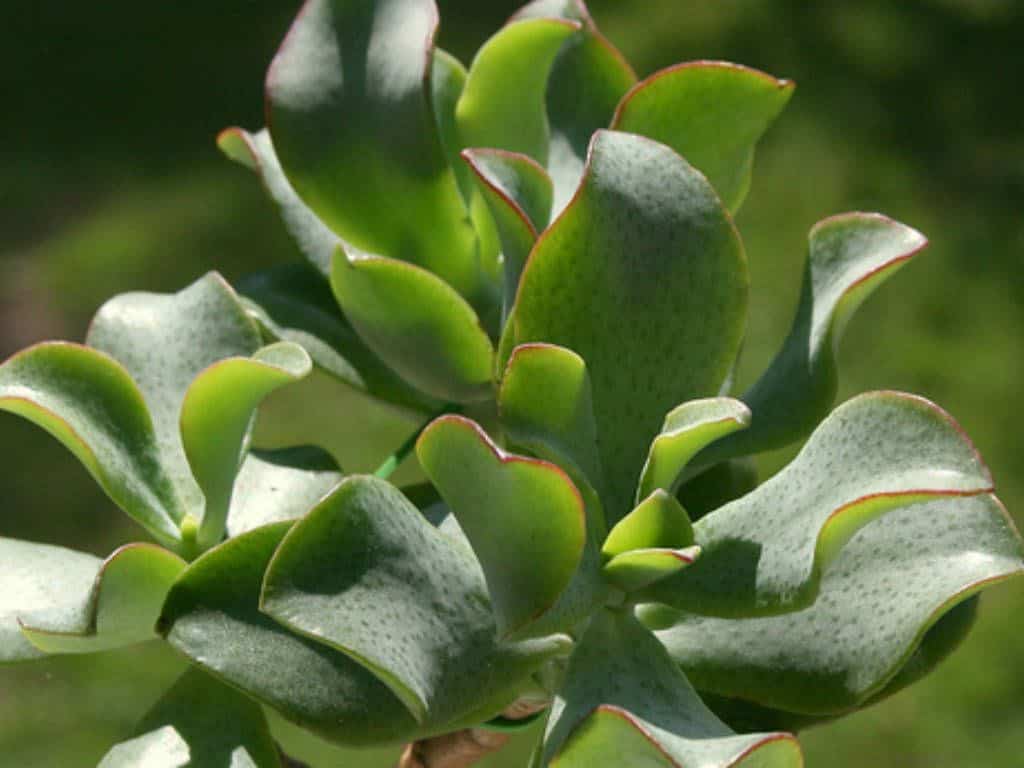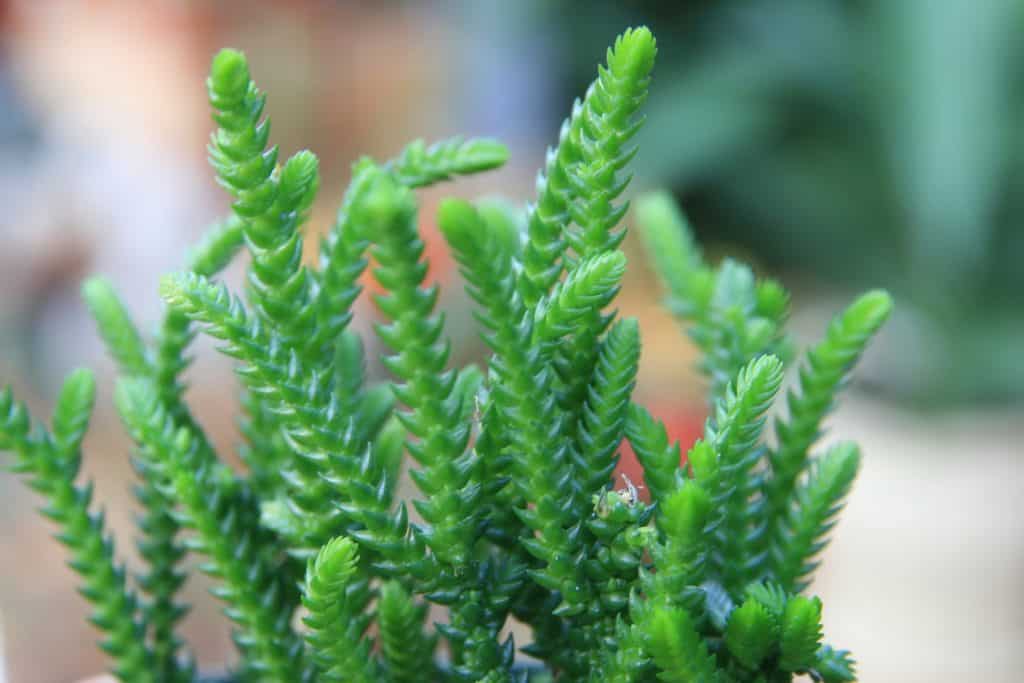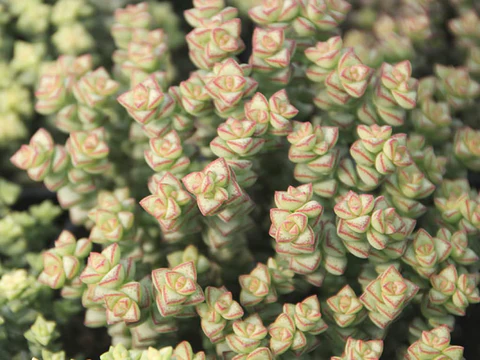Crassula rupestris, also known as the kebab bush plant or buttons on a string plant, is a small type of succulent that can be grown indoors or outdoors in warm and tropical climates.
Native to southern Africa, this plant has been popular among gardeners and succulent collectors alike because of its easy maintenance and attractive appearance.
The kebab bush plant is a beautiful type of succulent that will add some life to your home or office when its leaves take on the color of its surroundings, whether it be red, green, or even pink! It’s one of the easiest succulents to grow, but knowing how to care for it can make all the difference in whether you love this plant or not.
Crassula rupestris is one of the many succulents found in the Crassula genus. This succulent has thick, fleshy leaves that can grow up to 6 inches long and stems that grow anywhere from 4 to 10 inches tall.
Origin and distribution
Crassula rupestris is a small, perennial succulent plant native to South Africa. It is also known as kebab bush plant or buttons on a string. The plant has small, round leaves that are arranged in a necklace-like fashion on the stem. The kebab bush plant will grow up to 2 feet tall and produce clusters of white flowers during the summer months.
The tiny leaves of this kebab bush plant offer protection from harsh sunlight, providing shelter for any nearby plants or garden visitors.
In cold climates where they cannot survive outdoors year-round, these plants can be grown indoors as houseplants with careful attention given to light and temperature levels. If you enjoy their beauty but lack the space or patience to maintain them, you may want to consider growing them in hanging baskets or containers that do not need frequent watering.
Crassula rupestris propagation
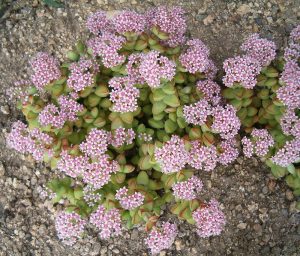
Crassula rupestris is a beautiful and unique succulent that is perfect for propagation. This plant can be propagated by stem or leaf cuttings, as well as by seed. To propagate by stem cuttings, simply take a cutting from the mother plant and allow it to callous over for a few days before potting it up.
To propagate by leaf cuttings, remove a leaf from the mother plant and allow it to callous over for a few days before potting it up. The leaves can also be grown in water which allows them to grow roots which will then form new plants in pots of soil. If you are looking for an even quicker way to propagate your crassula rupestris rosary vine, try planting some seeds!
Seeds should be planted on top of damp paper towels with just enough water to moisten them and placed in a cool dark place until they germinate.
Crassula rupestris care information
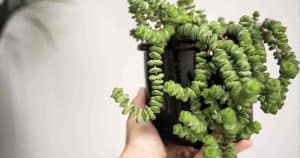
Crassula rupestris is a type of succulent that is easy to care for. It can be propagated by stem or leaf cuttings and prefers well-draining soil. This plant is drought-tolerant and does not need much water. It should be fertilized every few months during the growing season.
Light requirement
These succulents prefer bright, indirect sunlight but can tolerate some direct sun. If the leaves start to turn red, that means they are getting too much sun and should be moved to a shadier spot. Too little sun will cause the leaves to become pale and etiolated.
In winter it’s best to keep this plant in a sunny window or under grow lights where it can get 10-12 hours of light each day. If you live in an area with less sunlight in winter, you may need to supplement light with artificial light for 12 hours each day.
Soil/potting mix
A well-draining potting mix is essential for crassula rupestris, as they are susceptible to root rot. A cactus/succulent potting mix or a 50/50 mixture of potting soil and perlite or sand works well. Be sure to avoid mixes that contain peat moss, as it retains too much water. For extra drainage, add a handful of gravel at the bottom of the pot.
Watering
These succulents are very drought-tolerant and can handle long periods of time without water. However, they will appreciate a good watering every now and then. To water, simply give them a good soak, allowing the water to fully saturate the soil. Allow the soil to dry out completely before watering again.
Fertilizer
Most succulents don’t need much fertilizer, but if you want to give your crassula rupestris a little boost, use a succulent-specific fertilizer once a month during the growing season. Just be sure not to overdo it – too much fertilizer can actually harm your plant.
Apply the fertilizer to the soil around the plant, not directly on the leaves. And finally, make sure you water your plant before and after applying fertilizer to avoid burning the roots.
Temperature
Crassula rupestris is a kebab bush plant that prefers warm temperatures. It can tolerate brief periods of cooler weather, but prolonged exposure to cold will damage the leaves. The ideal temperature range for crassula rupestris is between 70 and 85 degrees Fahrenheit.
Humidity
Crassula rupestris, or the kebab bush plant, is a gorgeous little plant that is perfect for adding a touch of green to any space. Though it’s small, this plant is tough and can tolerate a wide range of conditions.
One important thing to keep in mind, however, is that the kebab bush plant does best in high-humidity environments.
The ideal humidity range is 40-60%. Low humidity will cause its leaves to shrivel up. Too much humidity can cause fungal diseases like powdery mildew.
Pruning
succulents are one of the easiest plants to take care of, but even they need a little TLC every now and then. Pruning is one of the best ways to show your succulents some love and get them to look healthy again.
The first step in pruning your succulents is to cut off any broken leaves or yellowing leaves with clean cutters.
Next, clip off any dead roots that have been damaged by over-watering or other environmental factors.
Finally, you can remove any flower stems or seed pods that have grown too long or outgrown their space in the pot so they don’t become a problem later on.
When to repot
The best time to repot your crassula rupestris is in the spring when the plant is actively growing. You’ll know it’s time to repot when you see roots coming out of the drainage holes in the bottom of the pot. If you wait too long to repot, the plant can become pot-bound and stressed, which can lead to unhealthy growth.
Dormancy/Winter rest
In winter, Crassula rupestris enters a state of dormancy. This is a period of rest for the plant, during which growth slows down and the leaves may fall off. The plant will not need as much water during this time, so be sure to reduce watering. If the leaves do fall off, don’t worry – they will grow back in spring!
After flowering, your Crassula should put out new roots from the base of its stem. These are sometimes called pups. They are just baby plants that can be detached from the mother plant and transplanted elsewhere to start their own life.
Crassula rupestris flower & fragrance
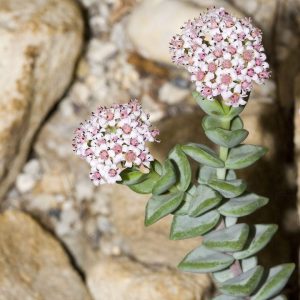
The Crassula rupestris produces small, white flowers that have a faint fragrance. This succulent is a great choice for those who are looking for a plant that is both easy to care for and beautiful. The Crassula rupestris is a perfect addition to any home or office.
Growth rate
Crassula rupestris is a small, fast-growing succulent that is perfect for those who are new to plant care. This plant can tolerate a wide range of light conditions, from full sun to partial shade, and only needs to be watered once a week.
Crassula rupestris is also one of the few succulents that can bloom indoors, making it a beautiful and easy-to-care-for addition to any home.
Toxicity
All members of the Crassulaceae family are considered non-toxic to humans and animals. However, some people may experience skin irritation after handling the plant. If you have any doubts about your sensitivity, it’s best to err on the side of caution and wear gloves when handling crassula plants.
USDA hardiness zones
Crassula rupestris grows best in USDA hardiness zones 10 to 11. It needs to be planted in an area with full sun and well-drained soil. During the summer, it is important to water it once a week and apply a water-soluble fertilizer.
It can tolerate drought but not cold weather well so make sure that it is put indoors during winter months or keep the plant in a spot where the temperature does not go below 50 degrees Fahrenheit.
Pests and diseases
Although crassula rupestris is a relatively easy plant to grow, it is susceptible to mealybugs and other pests. The best way to combat pests is to keep an eye on your plant and inspect it regularly. If you see any pests, immediately remove them with a cotton swab dipped in rubbing alcohol.
Diseases are not common in crassula rupestris, but if your plant does get sick, the most likely culprit is root rot. Root rot occurs when the roots of your succulent become too wet or over-fertilized.
To treat this disease, first, make sure that your plant is getting enough light by repositioning it or rotating its pots so that all sides of the leaves receive sunlight equally. You can also add some perlite to help maintain moisture levels around the roots. It’s important not to over-water as this will exacerbate the problem of root rot.
